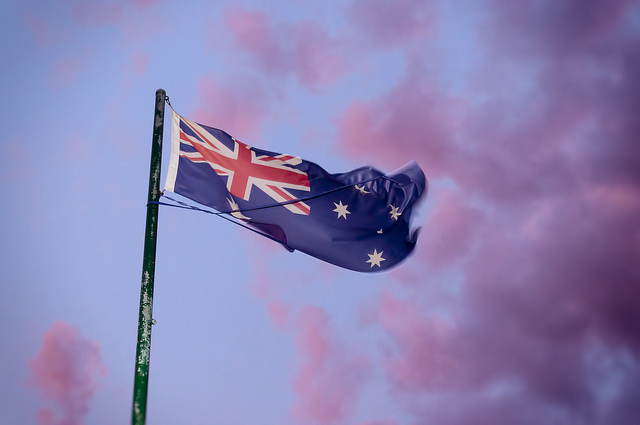
Australia’s next submarines will be the most sophisticated naval vessels under construction in the world and they will be built here in Australia with Australian workers using Australian expertise and Australian steel. The strong desire to maximise Australian content has more to it than mere symbology. In fact, as David Nicholls argued recently, it goes to the level of sovereignty achieved and will be a critical determinant of the operational capability provided to Navy, and define Australia’s control over the design, along with local industry’s involvement in its support. It will also determine whether many of the long-term high-tech jobs are created in France or in Australia.
The announcements by the government and Defence officials are encouraging. But why is sovereignty so important and what level should we aim for?
Deterrence is Australia’s top-level requirements of its submarines, facilitated by capabilities to:
- contribute to sea space denial, guarding our approaches;
- deploy forward, exploiting stealth to gain access to key areas; and,
- gain valuable intelligence and warning or to strike as appropriate.
These requirements, combined with our geography, underpin the arguments for a larger submarine, not currently available on the shelf. It’s necessary then that a special design is undertaken. Since the design will be unique to Australia, we must sustain and maintain it, as well as evolve the knowledge to support it through the 50-year life of the program. Capability, responsiveness, security and probably cost are best served if we do all of that in Australia, just as we have done for Collins-class for the past 16 years.
To achieve this we need a higher level of sovereignty than we seek for off-the-shelf purchases like the Joint Strike Fighter. It should include complete freedom to develop the design, with delivery of all information required to achieve this, unencumbered by any intellectual property inhibitions involving the French design.
The conceptual design for Australia’s next submarine fleet is now underway in France. The phases that follow—the detailed design, production design and the planning for in-service support—should be performed in Australia by an Australian entity with DCNS support, just as was done for the Collins boats. This will ensure the maximum utilisation of an Australian supply chain for the components as the Collins has demonstrated—over 90% of ASC’s support funds for Collins are currently being spent in Australia.
Achieving a successful build under Australia sovereignty is best achieved by advancing ASC’s existing design support capability for Collins and the very successful Submarine Enterprise’s capability that has achieved the rejuvenation of the Collins capability.
Encouragingly, the recent decision to split ASC into 3 government-owned companies opens the possibility for a fourth new company: a partnership between the ASC and DCNS to construct the submarines at facilities leased for this purpose. That wouldn’t be a new experience for DCNS, which is 62% owned by the French government.
Sovereign doesn’t mean solitary; we should be engaged with and supported by our allies. Given the selection of DCNS as the design partner, that will require a new relationship with France and her Navy. It will complement our existing strategic, operational and tactical relationship with the USA and USN.
The proposed Australian design environment will also allow us to maximise protection of third party IP and gain optimum benefit from Allied support. The mobilisation phase now underway must factor in the level of sovereignty we seek.
There are a number of platform issues arising from our requirements and, since these are the most difficult/expensive characteristics to alter in service, a big effort to resolve them is required during the design process.
Given the lead time and the input into the detailed design process suitable shore-based platform R&D facilities are now urgently required to resolve platform issues including those arising from the long transits, reducing the snort signature, achieving excellent mobility and dived endurance. For example:
- propulsion system developed for the tropical operating environment
- the choice of higher performance lithium batteries involves significant design and safety issues
- Air Independent Propulsion (AIP) will be a key requirement for the challenging operating environment
- automation to support long mission requirements and reduce crew demands
We currently rely on the USN for modification to our Command Management System, which impacts our ability to meet specific RAN requirements for conventional submarines and has severely throttled our very capable SMEs in this field. Sovereign control requires local capacity to support and optimise the software in Australia; a similar capability that we had with the Oberon Submarine Warfare Systems Centre that drove the successful Submarine Weapons Update Program. It provided a peer to work with USN counterparts and served to mobilise, focus and drive Australian SME capabilities.
Sovereignty is a fundamental enabler for maximising Australian interests. Demanding operational requirements and a rolling construction program of 12 submarines enable and justify a high level of sovereignty. Decisions made in the contracts now in place to commence mobilisation and the design process plus those to be signed for platform R&D and construction entity will determine the level of sovereignty achieved. The same logic should be extended to the Command Management component of the combat system.
Sovereignty is more than symbolism. The level of sovereignty achieved will have a major impact on the operational capability boosted by incorporation of French, Australian and US R&D and Australian skills/employment in the high-tech areas of design, engineering and R&D for future evolution and support of the design.
We should establish and nourish an Australian design environment. The current efforts to achieve this reflected in official announcements should be applauded and encouraged.

